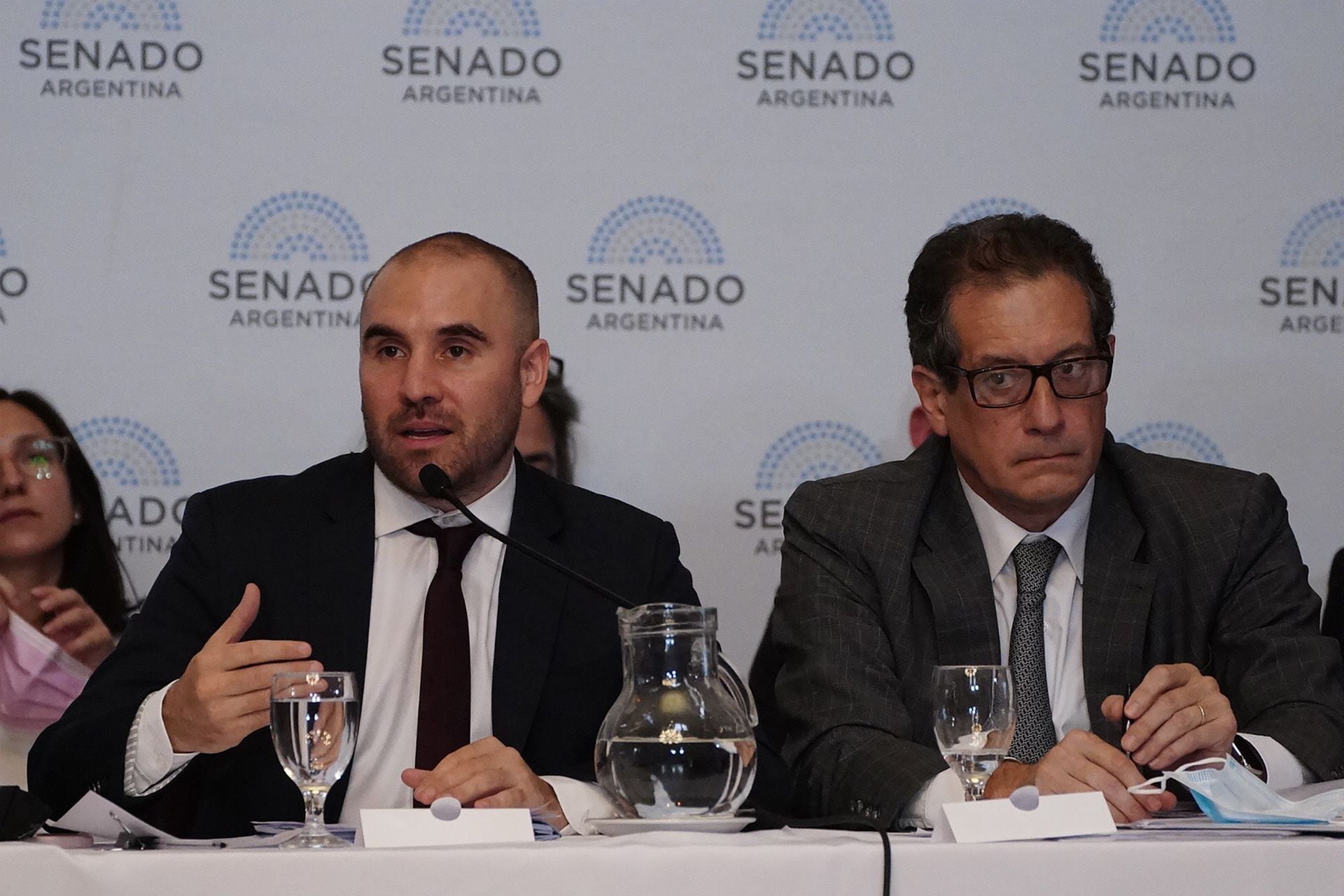
The Government is preparing to turn the page on debt negotiation and will seek to focus its policy on what it recognizes as the main problem facing the Argentine economy. The “war” against inflation that will begin this Friday, anticipated by President Alberto Fernández, will include an arsenal of well-known measures that the Executive Branch put on the table in an attempt to make a political gesture in the face of a higher-than-expected inflation rate in February, which preannounces numbers even worse for the coming months: the direct impact of the war in Ukraine on international values, the latest fuel increase and, later, the readjustment of tariffs are still lacking.
The approval of the agreement with the International Monetary Fund in the Senate will give way for the economic team to move to the next stage. The February CPI of 4.7% overall and 7.5% for food - the highest number in five years for this category - put the Executive Branch on alert. In the last few hours different ministries have drawn up a sort of package of measures as part of the metaphorically warlike confrontation against the pace of price increases.
As Infobae learned, at the end of this Thursday there was still a traditional menu of measures on the table that, together, could be announced this Friday by Alberto Fernández in Tucumán. The focus was on the Ministry of Agriculture led by Julián Domínguez: the possibility of readjusting retentions for soybean meal and oil from 31 to 33% and the strengthening of trusts that subsidize food prices in local gondolas appear as the central determinations in the “renewed” pricing strategy.
The spirit of these measures is to ensure the supply of wheat in the domestic market in order to avoid an even greater price spike in products derived from that crop, that is, any that is made from wheat flour. In this case, time is of the essence: in some official law firms and private analysts, there is an even deeper impact of the crisis on the global food market due to the war in Ukraine, which would bring more serious inflation figures for the coming months.
In between there will be other additional sources of tension on the price battlefront. The most immediate will be the side effect that will spill to different productive sectors due to the readjustment in fuel values, which rose by 9.5%. Some mass consumer entrepreneurs consulted by Infobae already imagined that a more expensive gasoline will imply a more expensive cost scheme for the chain.
The other expected impact is printed in the agreement with the IMF itself: the increase in tariffs for the reduction of subsidies agreed with the agency. The start of segmentation is planned for mid-year, audiences through, which will begin a new scheme for updating utility prices. Private analysts and some close to the ruling coalition's power device believe that inflation, with all these ingredients, will be well above the agreed price range of between 38 and 48 percent for this year.

The Government will move forward with its package of measures, for which it will not need, they assure, the endorsement of the agency's staff. The doubt was established by one of the conditions included in the economic policy program initialled with Washington. Point 33 of the policy memorandum specifically talks about the involvement of the Monetary Fund at a time when the Government is designing “additional measures” to those specified in the program.
“We are confident that our policies are adequate to achieve the objectives of the program and we are ready to take the additional measures necessary to that end. We will consult with the IMF on the adoption of these measures and prior to any revision of the measures contained in this Memorandum, and we will avoid any policies that are not consistent with the objectives of the program and our commitments in the context of this Memorandum,” explains that paragraph.
Official sources assured that one of the measures that will be taken in the coming hours by the Executive Branch through the Central Bank, such as an increase in the interest rate to align these returns to the new inflation scenario, is not carried out either in coordination or with the prior authorization of the agency's staff, but rather the effectiveness of the rate dumming and evaluation of whether or not they were positive in relation to the price increase will be defined during quarterly reviews.
In the case of specific measures such as strengthening trusts agreed with exporters to subsidize local food prices or an increase in export duties on a group of agricultural goods, the answer is more blurred, although official sources assured that in this case the Government will not need to raise For the consideration of the staff, none of these measures.
At the IMF, however, they ensure that technical contact with officials is constant and was not interrupted after the closure of the economic program negotiations. In this regard, the organization's spokesman Gerry Rice said on Thursday: “The program seeks to begin to reduce persistent high inflation through a multiple strategy that involves a reduction in monetary financing of the fiscal deficit and a new framework for the implementation of monetary policy to generate rates of positive real interest to support the demand for assets in pesos,” he described.
“This, of course, will be a challenging task in the light of the evolution of the world situation, as rising commodity prices are affecting inflation around the world, a point we just talked about,” the IMF spokesman continued. Specifically on the impact of the war on Ukraine, which calls into question some of the macroeconomic assumptions of the agreement, Rice said: “I can tell you that IMF technical staff are assessing the broader potential impact on growth, as well as on external and fiscal balances. The uncertainties, however, remain great and depend on the duration of the conflict.”

War on inflation: what measures does the government think
The arsenal of measures that the Government can take to combat inflation is limited. In this sense, there is, on the one hand, a possible increase in retentions on soybean flour and oil - the Executive Branch ruled out increases for grains such as corn or wheat - or the formation of trusts agreed with exporters and supermarkets to subsidize local prices of certain products.
It is an experiment that the Government has already tried with goods such as oils - which lasted until January 2023 - and more recently a similar scheme pushed by Feletti for wheat products. Although it is a softer mechanism, the tension with the agrarian leadership since the closure of exports of soybean flour and oil on Sunday puts into question whether the Executive Branch can move forward on measures that require consensus. The sectoral chamber of exporters CIARA, for instance, has already warned that it would be removed from this type of program in the event of increases in withholding.
Another option is, in addition, some reinforcement in price control schemes. In the coming days, talks should begin between businessmen and internal trade authorities to unravel what increase the 1,300 products included in Care Prices will have. One hypothesis analyzed by executives in the mass consumption sector is that the Government requires that the program have more products with higher volumes on the shelves.
The most pessimistic possibility, in these hours admitting executives from food companies with direct and fluid contact with Internal Commerce, is that this office led by Roberto Feletti decides to move forward with some forced freeze such as the one that operated between October and January last. For some entrepreneurs it would be a boomerang effect: “February 4.7% is a consequence of that freeze, if they do it again the spring will jump later in the year”, they warned from a firm in strict off the record.
There will also be, although it is a preliminary idea, some kind of attempt to coordinate future expectations. Next week, the Government will call on employers and unions to seek price agreements, as President Alberto Fernández announced this Wednesday to a group of trade unionists and executives at the Government House. That agenda is still open and does not contain a specific roadmap, said those attending Wednesday afternoon's meeting with the president.
KEEP READING:
Últimas Noticias
Debanhi Escobar: they secured the motel where she was found lifeless in a cistern

The oldest person in the world died at the age of 119

Macabre find in CDMX: they left a body bagged and tied in a taxi
The eagles of America will face Manchester City in a duel of legends. Here are the details

Why is it good to bring dogs out to know the world when they are puppies




